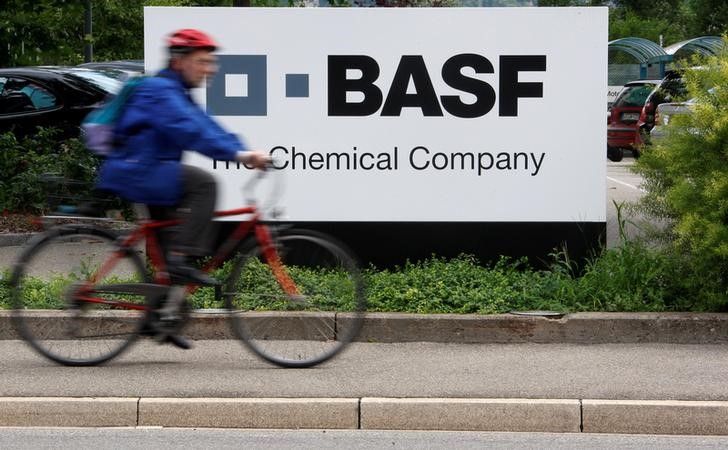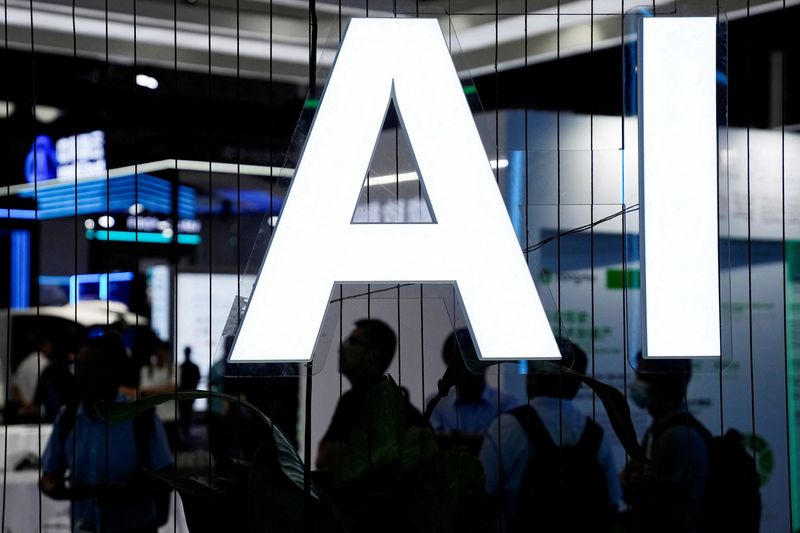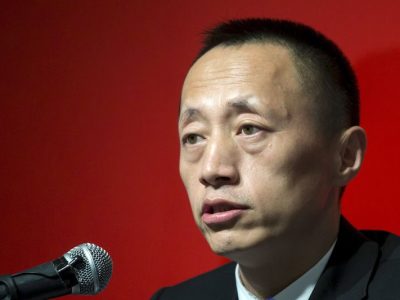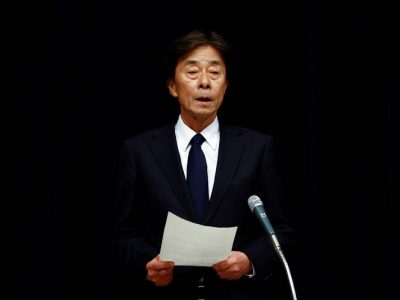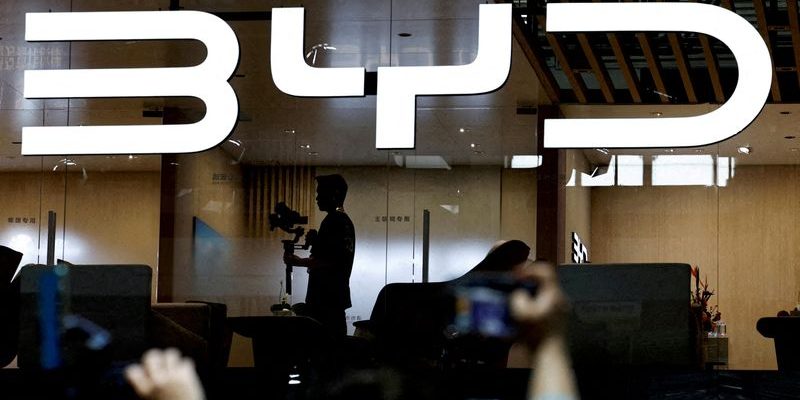
By Daniel Leussink
YOKOHAMA, Japan (Reuters) – BYD (SZ:002594) is rolling out electric-vehicle charging stations and ramping up marketing and customer incentives in Japan, aiming to boost sales in a market that has become a stumbling block in the Chinese automaker’s global expansion.
Warren Buffett-backed BYD has become China’s largest EV maker after years of breakneck growth at home. Now it is expanding overseas, including in Japan, one of the world’s largest auto markets.
But Japan remains tough for foreign automakers to penetrate. Demand for EVs has long been sluggish and the government this year changed how EV subsidies are calculated, reducing them for BYD and several of its rivals, and raising concerns about protectionism.
To win over Japanese drivers, BYD has offered discounts on the first 1,000 cars sold of its newest model, and is airing TV commercials starring a Japanese actress.
The strategy has meant higher-than-expected marketing costs. BYD’s overseas push is being closely watched, not least because the automaker is almost as valuable as GM and Ford (NYSE:F) combined.
Still, some Japanese are wary of buying big-ticket Chinese products due to quality concerns. Asia’s two largest economies also share a complicated wartime history and years of political tension.
“The cars are great, but I don’t think they’ll sell in Japan,” said 58-year-old Yukihiro Obata, who was visiting a BYD showroom in Yokohama, which neighbours Tokyo, in July with his son.
“Japanese people think Japan’s manufactured goods are superior to Chinese and South Korean ones. We just can’t believe Chinese products could be higher quality,” he said.
Obata said he was not opposed to buying a foreign automobile and was also considering EVs from Mercedes-Benz (OTC:MBGAF), Audi and Hyundai (OTC:HYMTF).
Shenzhen-based BYD opened its first showroom in Japan in February last year and has so far sold over 2,500 cars.
By contrast, Toyota Motor (NYSE:TM) sold just over 4,200 battery EVs in Japan over the same period, while nearly 17,000 Teslas were registered in the country as of end-March 2023, according to the most recent industry data available.
BYD offers three models and now has more than 30 showrooms.
“There are people in Japan who absolutely hate Chinese products, so it’s not a good idea to try and force ourselves on them,” Atsuki Tofukuji, president of BYD Auto Japan, said.
Instead, he wanted to win over people by BYD’s affordability and performance, he said.
GOVERNMENT SUBSIDIES
EVs accounted for just a little more than 1% of the 1.47 million passenger cars sold in Japan in the first seven months of this year, according to industry data. That does not include the low-power “kei” mini cars made for the domestic market.
EV sales have been slow in Japan because Toyota and other domestic automakers have focused more on hybrid technology.
The government in April revamped its EV subsidy scheme, saying that will promote the spread of chargers and other infrastructure.
Subsidies, which were previously determined by the car’s performance, now take into account criteria such as the number of quick chargers a manufacturer has installed, and after-sales service.
The subsidy on BYD’s Atto 3 SUV, which sells for 4.5 million yen ($30,996.00), was cut by almost half to 350,000 yen, from 650,000 yen.
The subsidy cuts have dragged on sales, Tofukuji said at a company event in July.
BYD responded by offering 0% loans during April to June, and cashbacks on home chargers in July and August. It also plans to put a quick charger at 100 locations by the end of next year, Tofukuji told Reuters, a previously unreported plan that could help it qualify for bigger subsidies.
To increase its brand awareness, it started broadcasting television commercials starring Masami Nagasawa, a Japanese actress and model.
That has helped bring in more customers, although the automaker has now spent more than it originally budgeted for marketing in Japan, Tofukuji said, declining to give the size of the marketing outlay.
BYD’s Japanese line-up includes the Seal sedan, which retails for 5.28 million yen for the rear-wheel-drive version and qualifies for a 450,000 yen subsidy. It also sells the Dolphin, priced from 3.63 million yen and qualifying for a 350,000 yen subsidy.
‘JAPANESE WAY’
The subsidy change could reflect a government drive to safeguard the domestic industry, said Zhou Jincheng, manager of China research at auto research firm Fourin in Nagoya.
“They had to take some kind of measures to protect their auto industry,” Zhou said.
An industry ministry official said the aim of the change was to create an environment where EVs were used sustainably and promoted “in a Japanese way”.
Other car makers that saw subsidies cut included Mercedes, Volkswagen (ETR:VOWG_p), Peugeot (OTC:PUGOY), Volvo (OTC:VLVLY), Hyundai, and Japanese maker Subaru (OTC:FUJHY).
Nissan (OTC:NSANY) and Toyota SUVs still qualified for the maximum 850,000 yen, and Tesla (NASDAQ:TSLA) also saw equal or higher subsidies on the models it sells in Japan.
While overall EV sales are low, foreign auto brands accounted for almost 70% of the sales in the first seven months of the year.
The lower subsidy did not stop Kyosuke Yamazaki, a first-time car buyer in his early 30’s, from buying a BYD Atto 3, though he missed out on roughly $2,000 in savings because he bought the car after April.
He said he liked the longer cruising range of the cars compared to Japanese rivals – and did not mind buying from the Chinese manufacturer.
“I used to work in Shanghai,” he said. “I know BYD well.”
($1 = 145.1800 yen)


